Michael Amendolia’s favourite photos of sight restored
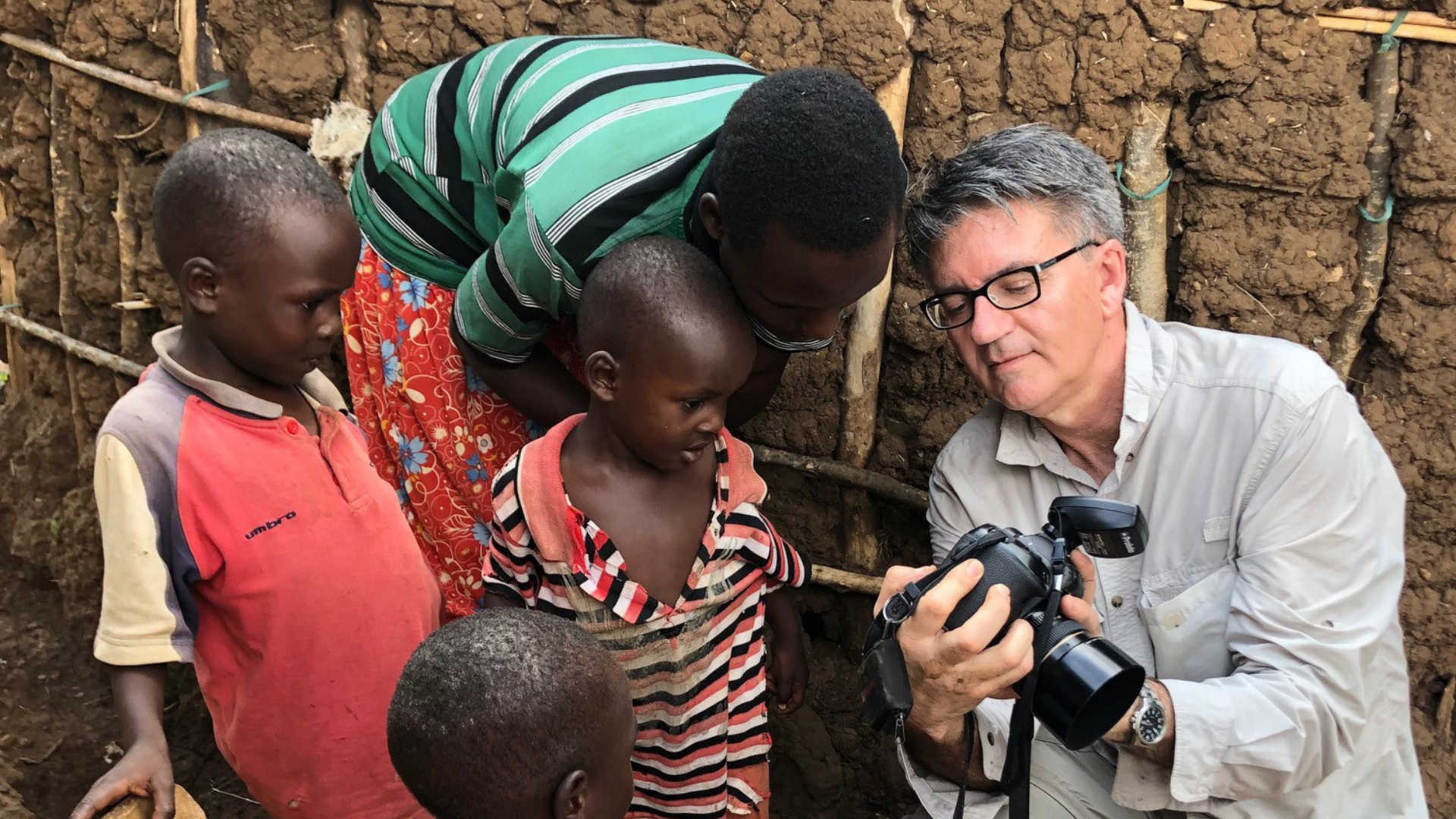
As a photographer, I’ve had the privilege of documenting some of the most moving moments in global eye health over the last 30 years. My journey with The Fred Hollows Foundation began when I met Fred shortly before his passing, and I’ve been capturing the Foundation’s work ever since. From the remote mountains of Nepal to the deserts of Eritrea and the bustling villages of Vietnam, my lens has followed the incredible efforts to restore sight and transform lives. These ten photos are some of my favourites—each one a snapshot of resilience, humanity, and the power of sight restoration to change the world.
Charang, Mustang, Nepal – 1992
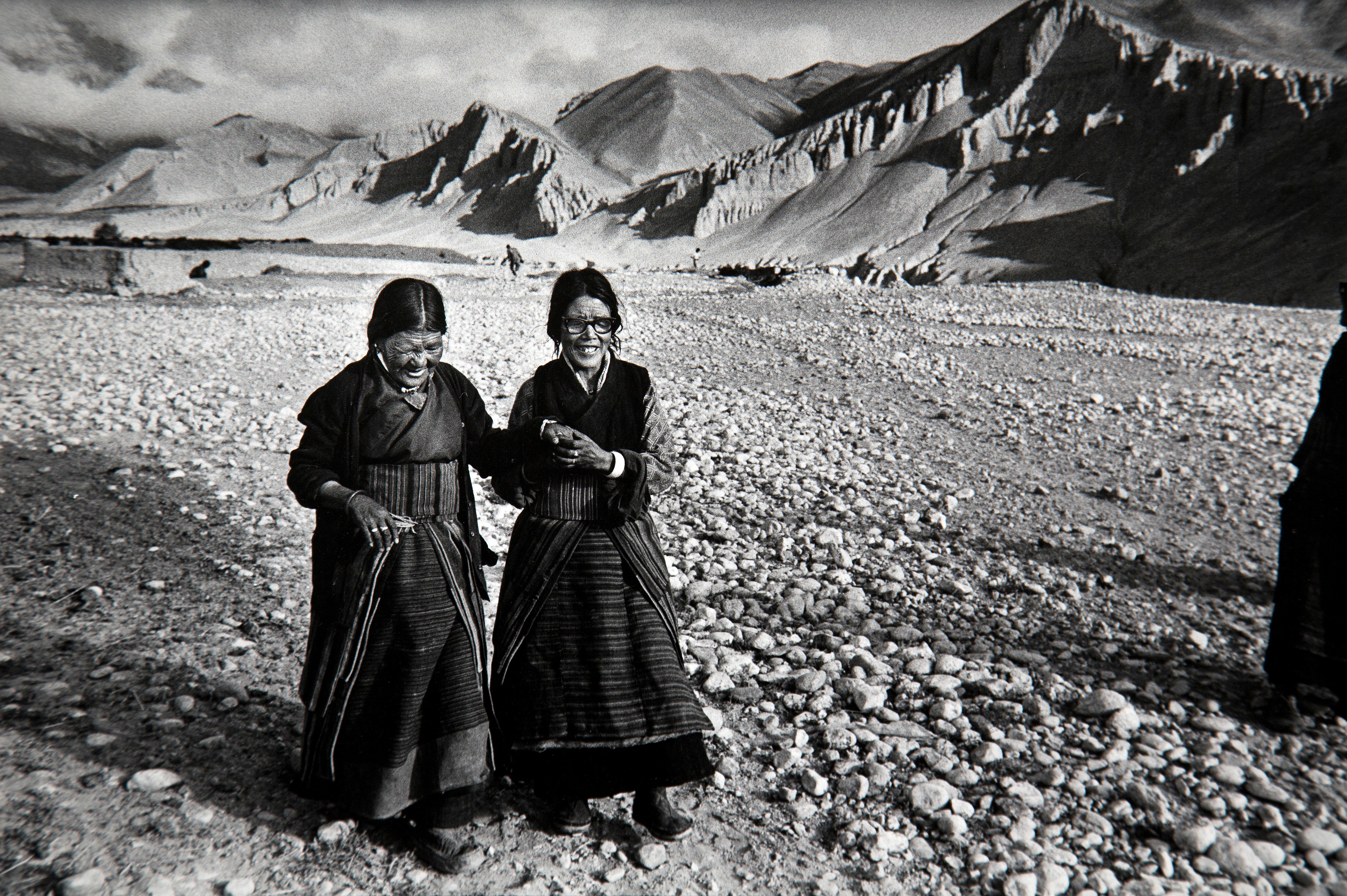
This is one of my favourite photos from thirty years of assignments.
Two of Dr. Sanduk Ruit’s cataract patients are seen walking across a glacial stream in Mustang's harsh, desert-like landscape, heading to the makeshift surgical setup at the Tilganga outreach eye camp in Charang.
This photograph was captured with a traditional camera and black-and-white film, which I developed in a darkroom after returning home.
Shortly after completing our work in Hanoi with Fred Hollows, Dr. Ruit invited me to join him and the Tilganga team on a trip to a region of Nepal that is typically off-limits to travel. This area shares a historically sensitive border with Tibet. It was the first humanitarian mission in the newly opened outer Mustang.
The ten days in Mustang were among the most challenging and rewarding of all my photographic stories on blindness. It felt like travelling back to a place untouched by modern society. Here, Dr. Ruit's concept was solidified: surgery could be performed almost anywhere they could generate their own power. If people couldn’t travel for surgery, they could bring the surgery to them.
Rwanda – 2016
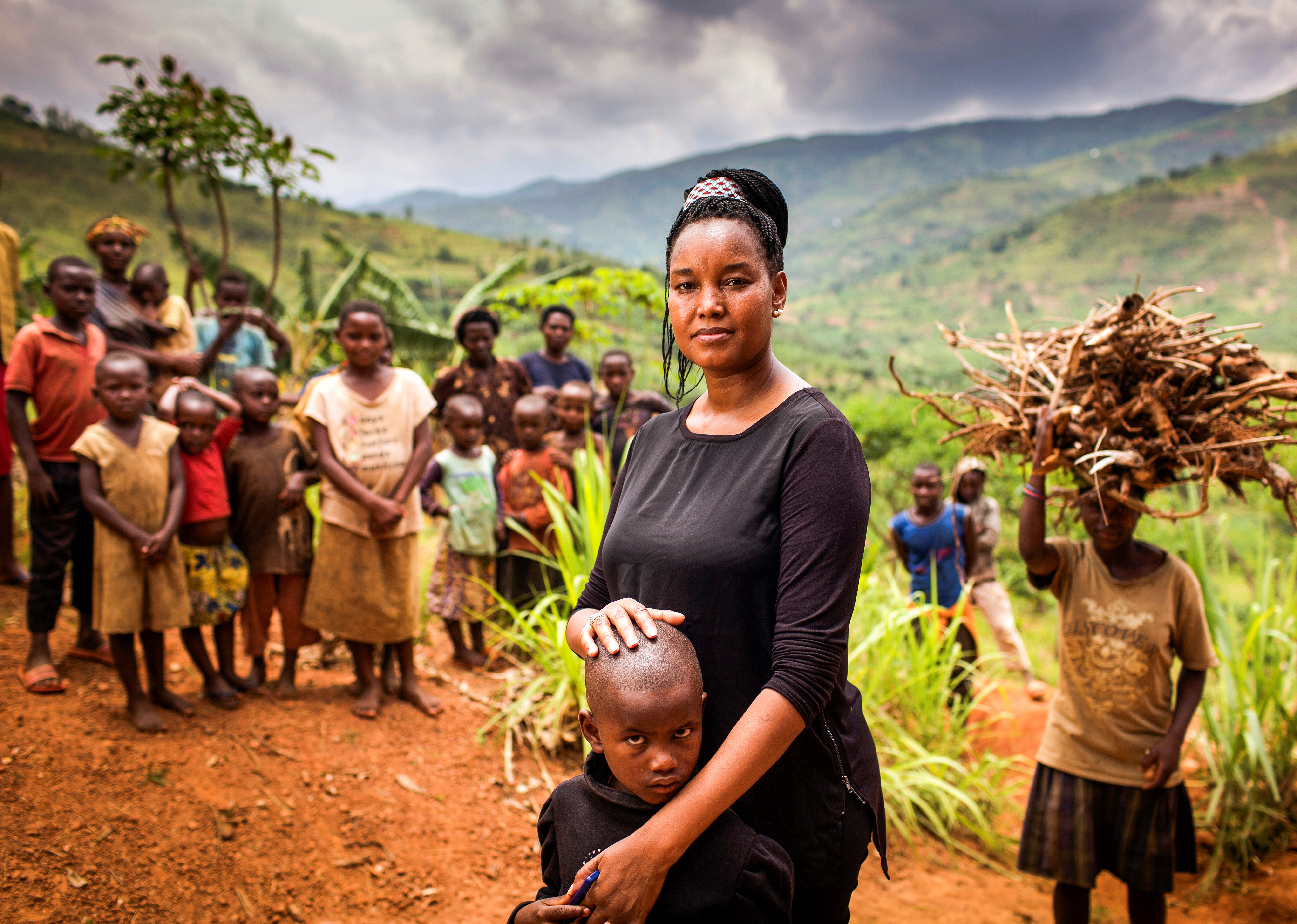
Dr. Ciku is the first female ophthalmologist in Africa trained by The Fred Hollows Foundation.
I captured this portrait of Dr. Ciku (Wanjiku) Mathenge in a rural village in Rwanda, during Eric’s sight restoration story. She stood in the perfect position with family and friends shortly after examining Eric’s eye. I love the strength of her character and the drama of the light, sky, and people.
Eric was born with cataracts, and at nine years old, it might have been too late to save his sight.
Every day, Eric’s mother, Clementine, watched her son endure hours of frustration and boredom. A farm labourer and the sole caretaker for Eric and his younger brother, Immanuel, Clementine faced constant challenges.
Eric waited eagerly each day for his little brother Immanuel to return from school. He longed to join the other children, to play, and to learn to read and write. But the local school lacked facilities for blind children.
Caring for a blind child in remote Rwanda was incredibly difficult. Since Clementine needed to stay close to Eric during the day, she could only take jobs near home. It was a catch-22: she needed more money to afford surgery for her son, but her circumstances prevented her from earning enough.
Barisol, Bangladesh – 2018
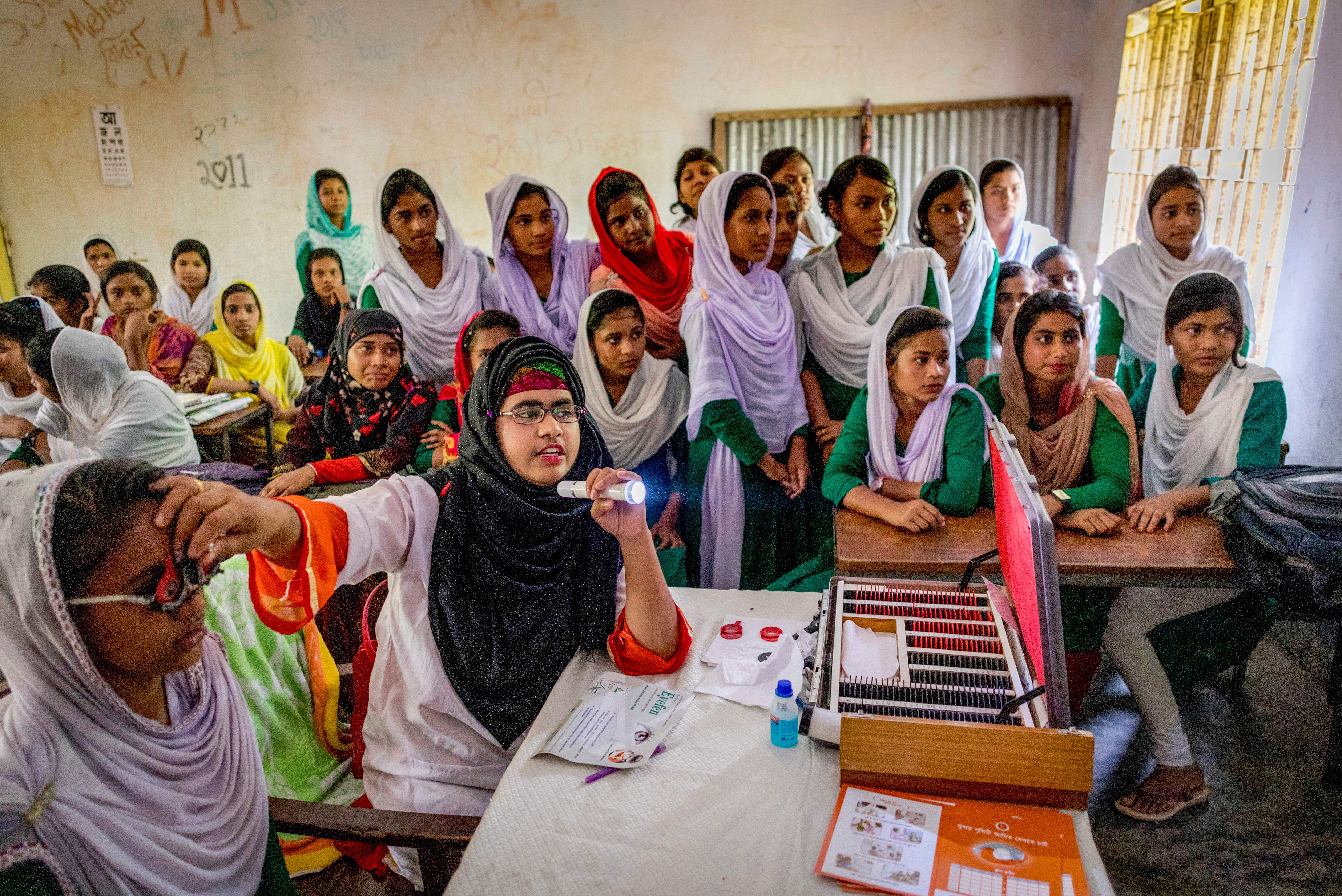
Primary eye care is the key to identifying potential problems early. 22-year-old Musfeka Najnin, a medical assistant, is screening Amina Secondary Girls School in Barisol students for eye issues.
The Fred Hollows Foundation supported the Bakergonj Forum (BGF), which implemented this screening program in rural communities.
Leh Ladakh, India – 2016
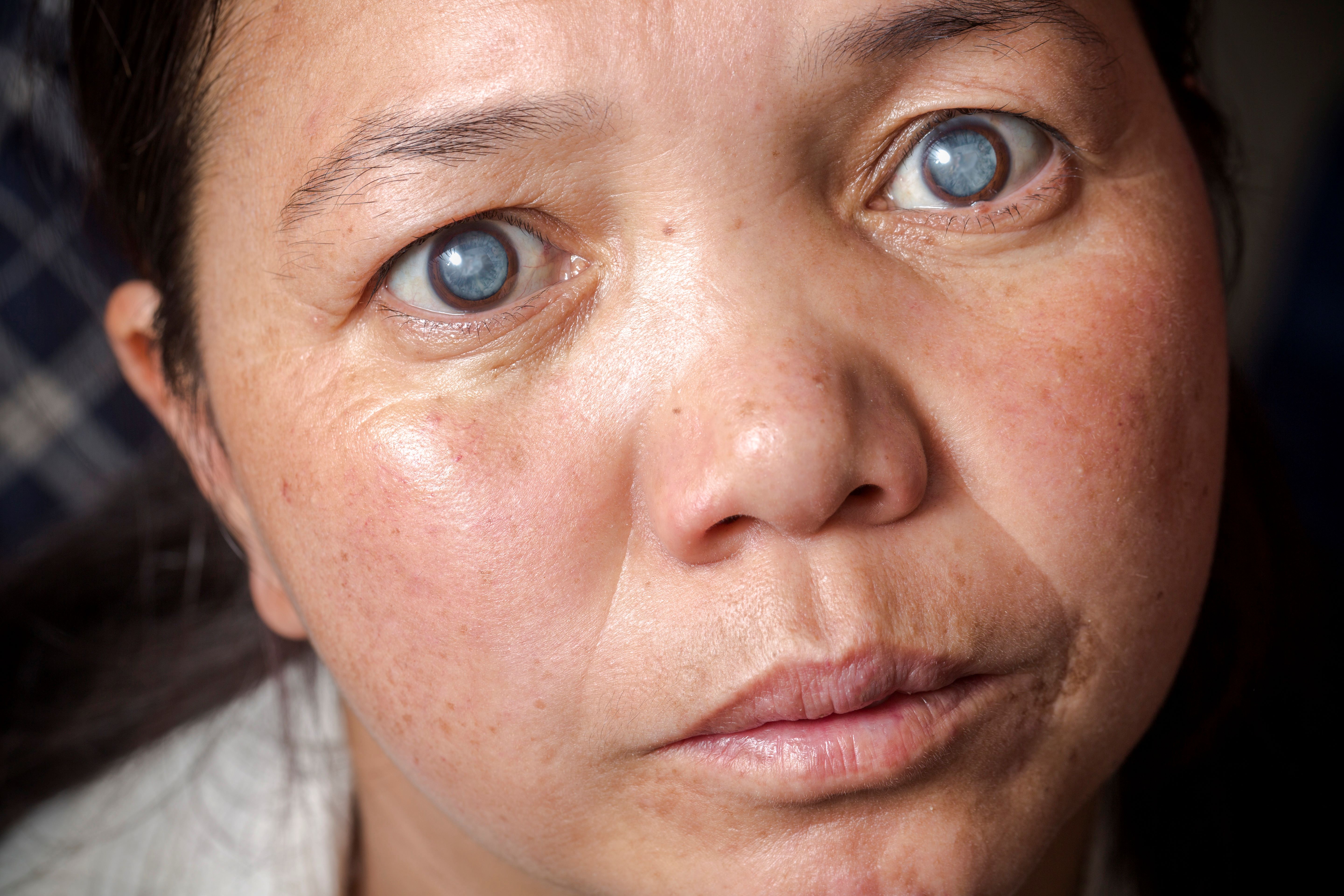
Thirty-year-old Thinles Lamo was photographed here just before undergoing surgery to restore her sight. Thinles suffered from severe cataract blindness, and I aimed to capture her opaque cataracts clearly in this photograph to illustrate the problem. The following day, her cataracts were removed and replaced with lenses. Sight restored.
Over the course of two years, her vision deteriorated, and she became increasingly withdrawn as she lost the ability to perform her daily tasks.
Sadly, young people like Thinles are not uncommon in regions like Ladakh, where the high altitude exposes residents to elevated levels of UV radiation.
Thinles lives in one of these communities, a four-hour walk from Leh. She had no idea that the sun could damage her eyesight. One day, while working as a teacher’s assistant, she began struggling to see and keep track of the children in her care.
Trachoma Emergency in North Sherwa, Ethiopia – 2014
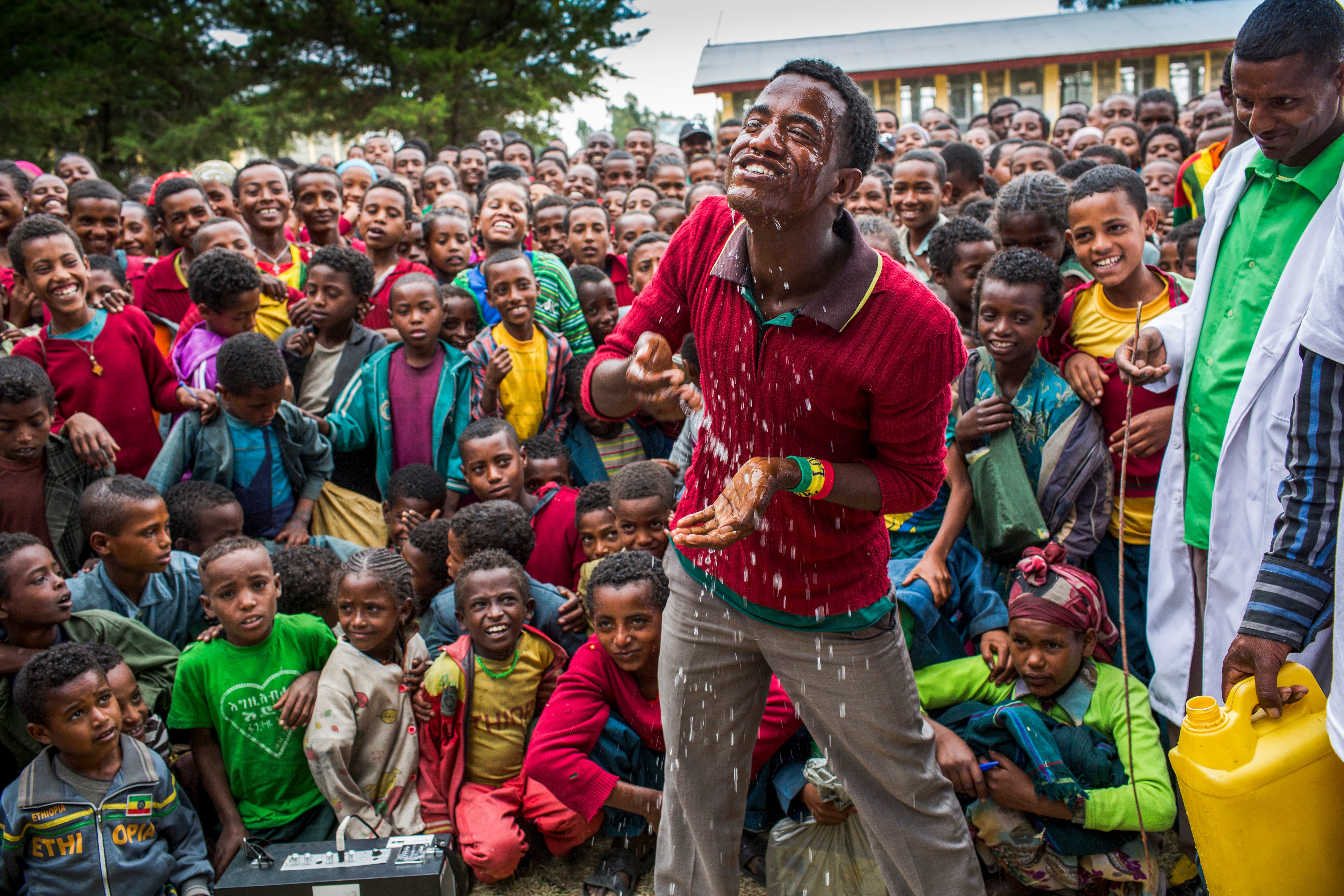
Teacher Shelmel Terefa provides trachoma education, including a face-washing demonstration, to students at a school in North Sherwa, Oromia. The Foundation’s work also focuses on prevention.
The atmosphere in the school playground was electric, with students nudging each other and crowding forward as Teacher Shelmel Terefa led the face-washing demonstration on trachoma education.
Kathmandu Valley, Nepal – 2019
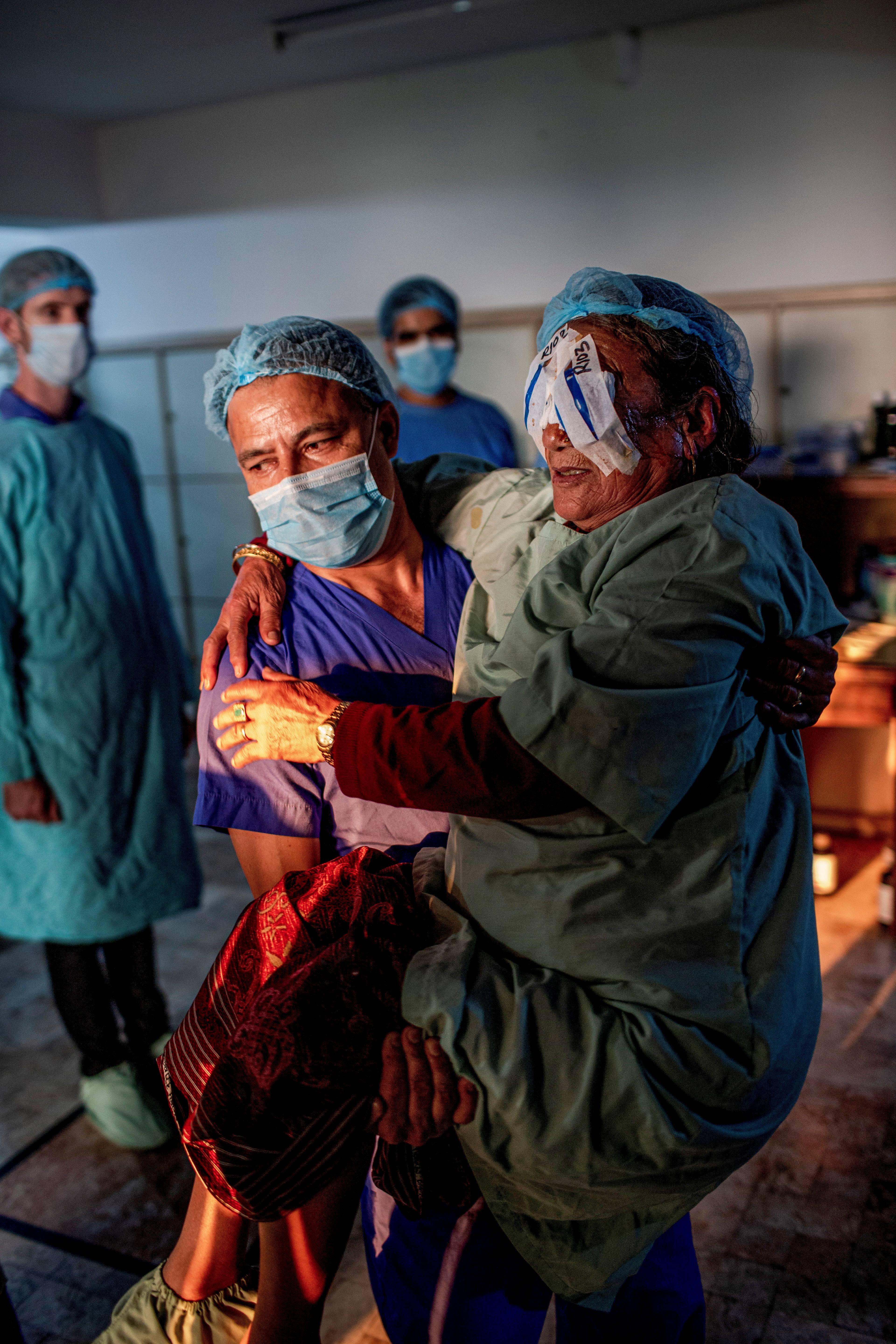
It’s rare to photograph a surgical patient story in such beautiful afternoon light, as seen here at Pullahari with 74-year-old bilaterally blind Chini Lama on the outskirts of Kathmandu. Ophthalmic Assistant Pradeep Karki carries Chini after her cataract surgery at the Pullahari Eye Camp, located on the outskirts of the Kathmandu Valley. The Tilganga Institute of Ophthalmology conducted the surgical outreach with support from the monastery.
Kigali, Rwanda – 2016
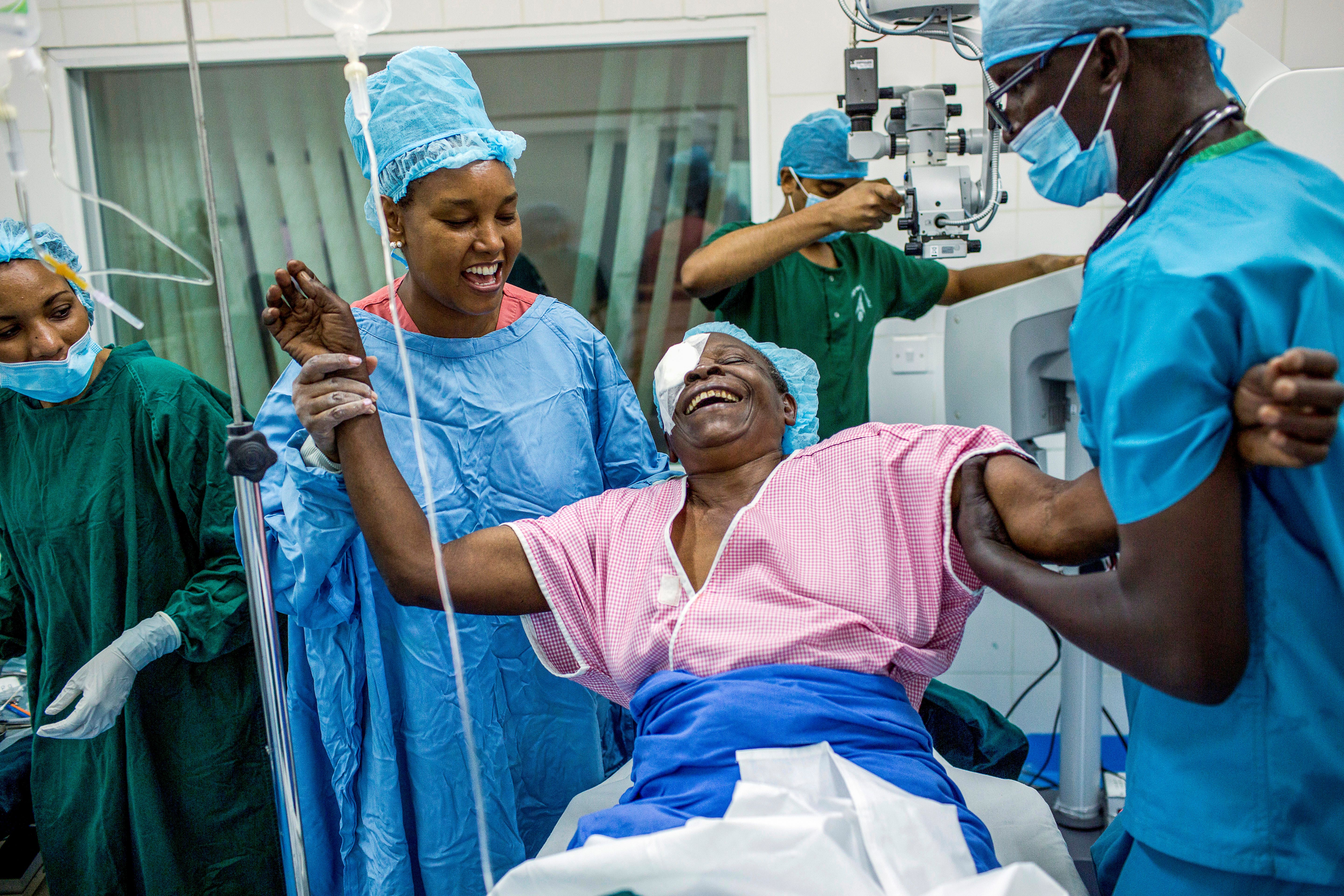
Francine Nyiradende, 76, was a vibrant character despite her blindness. Immediately after her surgery, she burst into laughter on the operating table with Dr. Ciku (Wanjiku) Mathenge—a moment unlike anything I’ve witnessed in all my years photographing cataract surgeries.
Francine, a widow for 30 years, had been blind for over three years before Dr. Wanjiku (Ciku) Mathenge restored her sight by removing her cataracts and replacing them with intraocular lenses.
Leh, Ladakh, Nepal – 2016
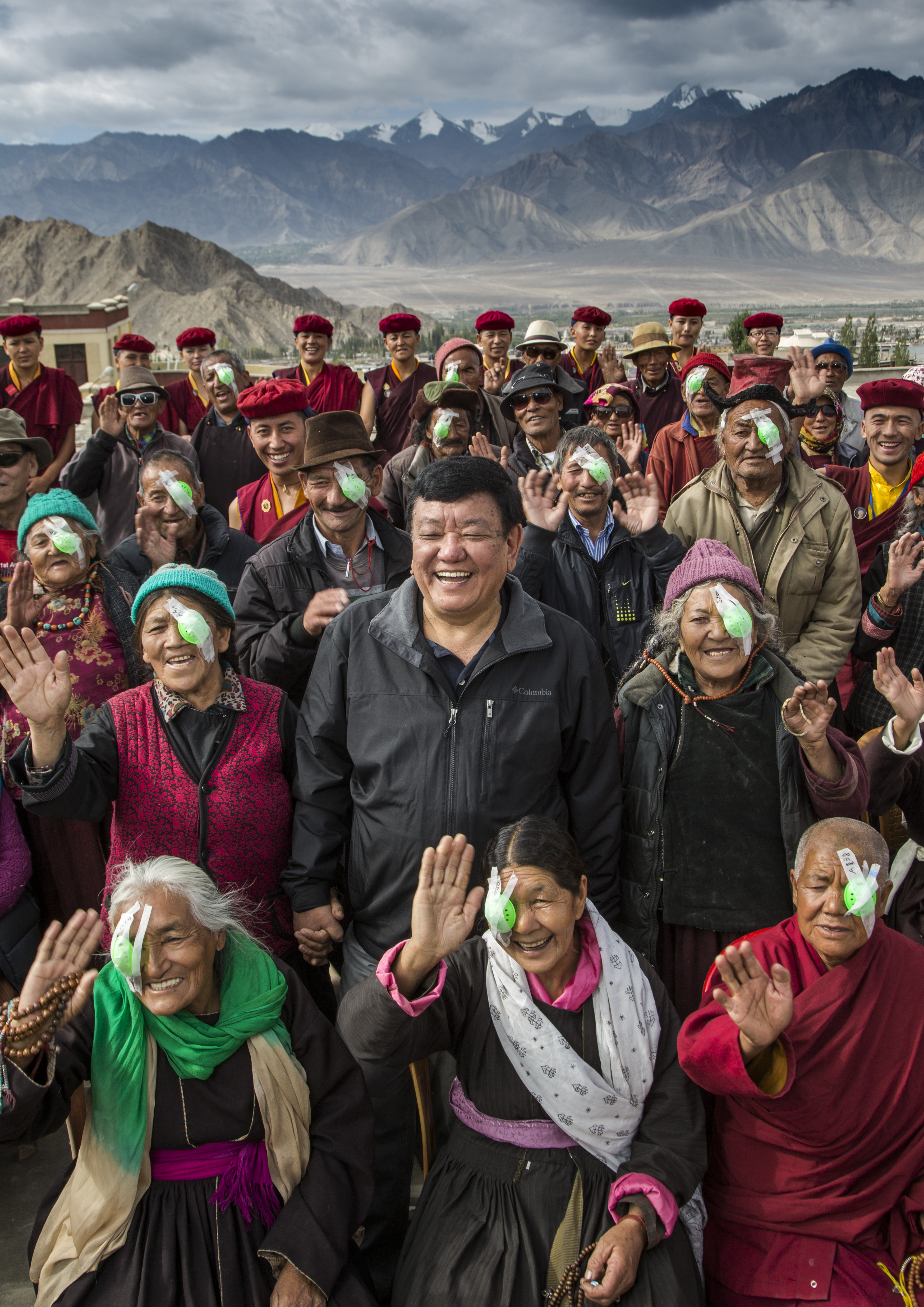
At the general hospital in Leh, I had the chance to capture a portrait from the roof of the legendary Nepalese ophthalmologist, Dr. Sanduk Ruit, surrounded by his surgical patients shortly after their post-operative examinations. With a bit of encouragement and luck, my vision for the shot came together.
In the weeks leading up to the camp, Dr. Ruit’s Tilganga outreach team carried out an extensive screening program within the local Leh community to identify cataract-blind individuals in need of surgery. Over four days, he and his team performed sight-restoring surgery on 268 people, all of whom could not afford the procedure otherwise.
Pularhari Monastery, Kathmandu Valley, Nepal – 2019
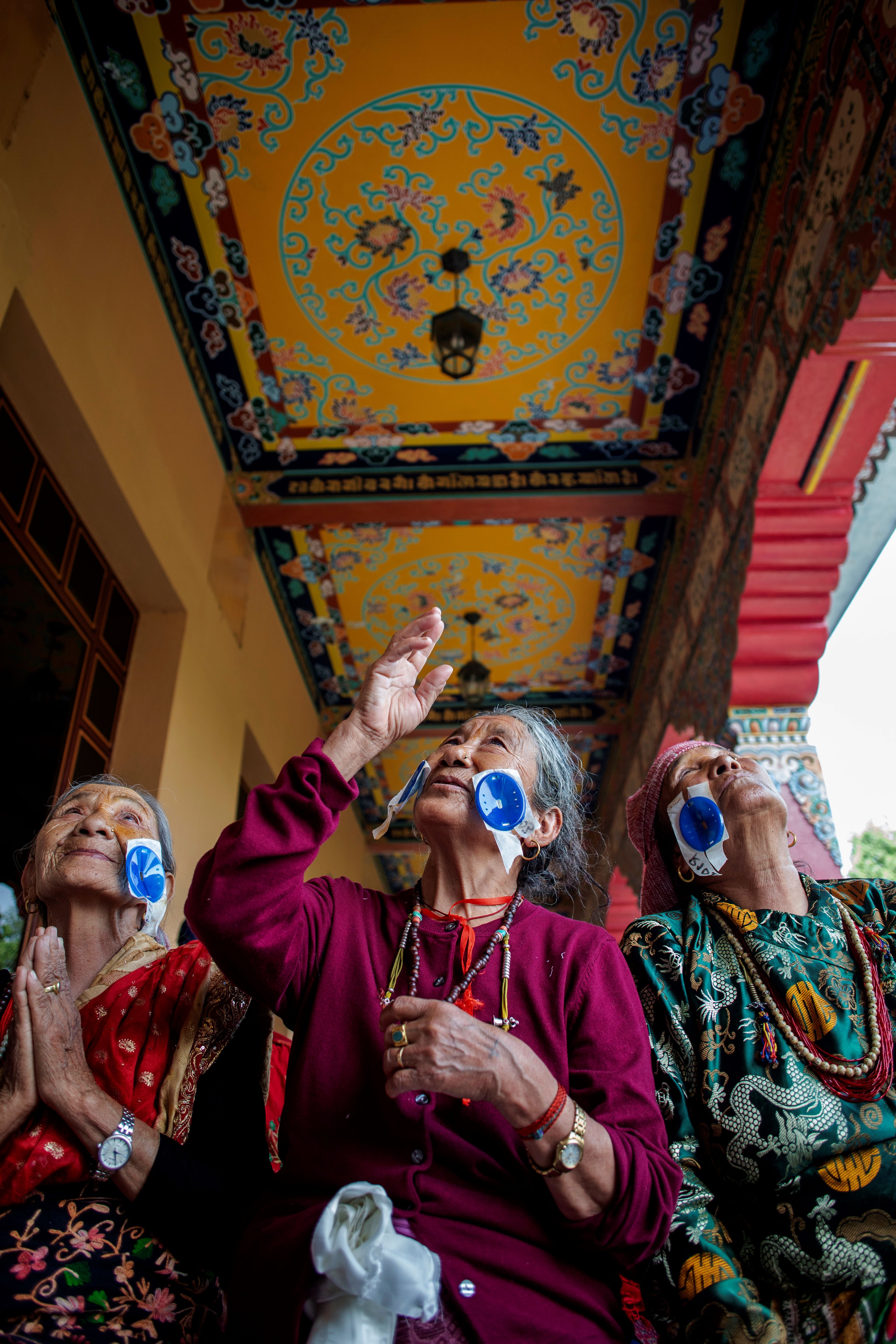
Chini Lama, 74, gazes up at the Buddhist mural paintings above her the morning after her cataract surgery, just after her post-operative examination. Chini, who was bilaterally blind, was accompanied by her friend Tashi Dolma, 70 (right), and Suna Lama, 80 (left), both of whom had surgery on the same day.
This outreach, conducted by the Tilganga Institute of Ophthalmology, is presided over by Dr. Ruit once or twice a year. It is held at the monastery with support from the monks.
Baringo County, Kenya – 2016
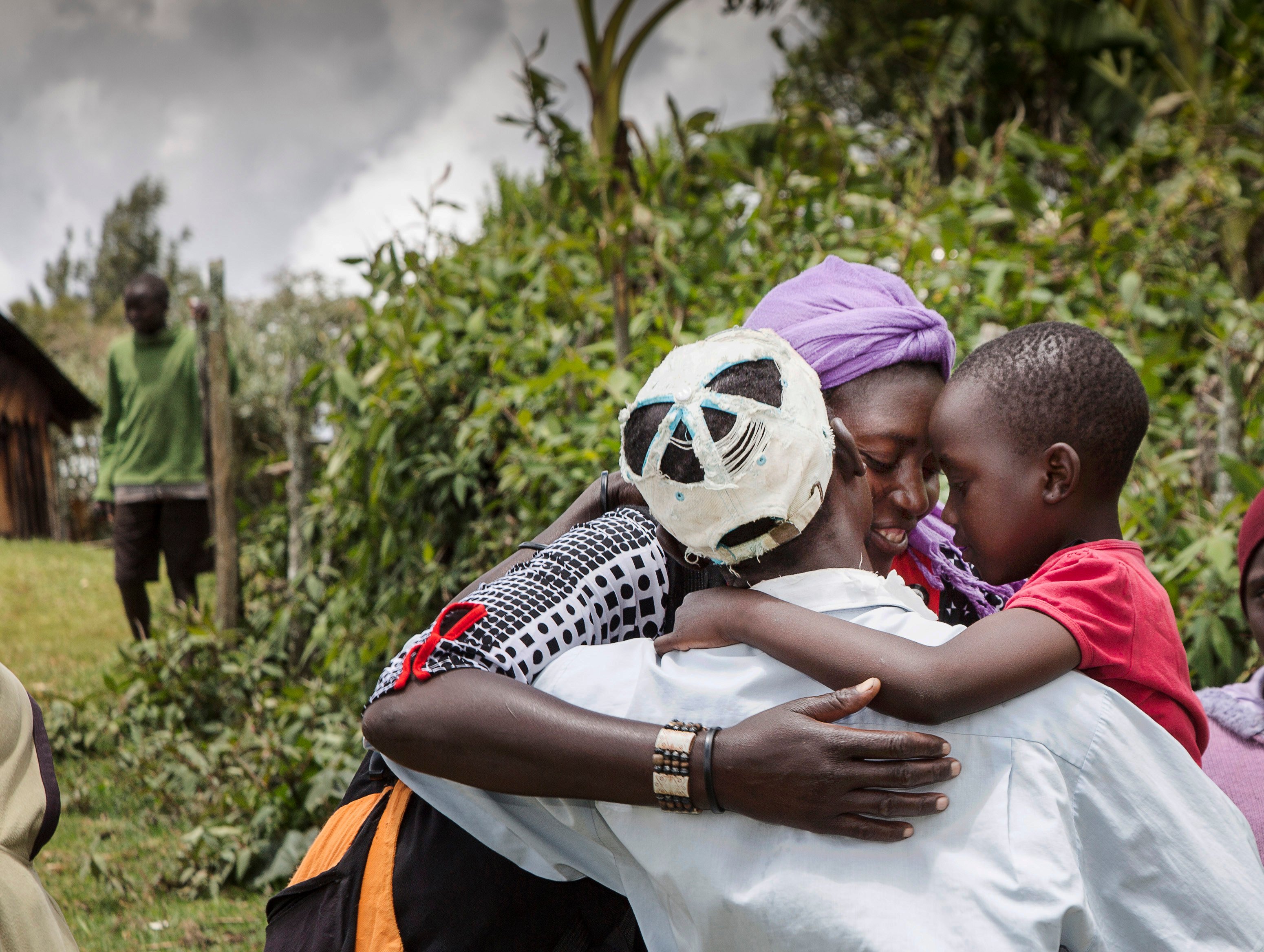
Seven-year-old Nabiritha rushes into the warm embrace of her father, Ramadhan, while her mother, Emily, looks on, as he returns home the day after her sight was restored. The moment is filled with spontaneous joy.
Nabiritha was born with bilateral congenital cataracts. Her mother, Emily, noticed something was wrong with her daughter’s eyes when she was just four months old.
Nabiritha would often sit outside her house, singing along to solemn gospel tunes on a small transistor radio. When she heard her friends and siblings playing nearby, she would tentatively stretch her hands out to feel the mud walls of her family’s modest home, trying to find her way toward the sound of their laughter.
Paediatric ophthalmologist Dr. Sarah Sitati from Sabatia Eye Hospital restored Nabiritha's sight by removing her cataracts. The day after the surgery, Emily watched with tears in her eyes as Dr. Sitati removed Nabiritha’s patches.
